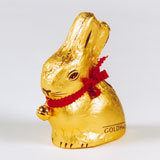Regional Holidays
The following holidays are only public holidays in the states mentioned.
This is celebrated in Bavaria, Baden-Württemberg and Saxony-Anhalt. Epiphany is a feast day to celebrate the birth and baptism of Jesus Christ. On this day children dressed as the Three Kings, or the Three Wise Men, write the letters C + M + B above the doors of houses ("Hausweihe"). These signify "Christus mansionem benedicat" – "May Christ bless this house".
The Feast of Corpus Christi ("Fronleichnam") is a Catholic festival celebrated on the second Thursday after Whitsun. Corpus Christi means the Body of Christ and refers to the elements of the Eucharist. This is a public holiday in Baden-Württemberg, Bavaria, Hesse, North-Rhine Westphalia, Rhineland-Palatinate, Saarland, Saxony and Thuringia.
The Feast of the Assumption is to celebrate the Mother of Jesus, Mary, being taken into Heaven by God, in body and soul, and is only a holiday on 15th August in Bavaria and Saarland.
Christians of the Protestant faith celebrate Reformation Day on the 31st of October. It is a public holiday in Brandenburg, Mecklenburg-Western Pomerania, Saxony, Saxony-Anhalt and Thuringia. The holiday commemorates the Reformation of the Church by Martin Luther in the 16th century, which created the formation of a new religious group, the Protestant-Lutheran Church.
Saints, martyrs and the dead are honoured each year on 1st of November. The graves and cemeteries are decorated by relatives. Catholics light candles, the "Seelenlicht", which also glow on the following All Souls Day. These symbolise the "eternal light" that provides illumination for the dead. It is a public holiday in Baden-Württemberg, Bavaria, North-Rhine Westphalia, Rhineland-Palatinate and Saarland.
Penance Day is celebrated on the Wednesday before the last Sunday in the Church year. The first protestant Penance Day was celebrated in 1532 in Strasbourg as a reaction against the Ottoman wars. It is only a public holiday in the state of Saxony.
Easter

The Easter Fire and Easter candles also form part of the Easter festival. They symbolise Jesus Christ’s resurrection and triumph over the darkness of death and sin. Pagan and mythical motifs live on in many of the popular spring customs that take place at Easter, and which were later filled with Christian symbolism. Two central symbols are the Easter egg and the Easter bunny. According to age-old beliefs, eggs are considered to be the origin of life. The hare is the symbol of fertility. The tradition of painting Easter eggs in bright colours goes back hundreds of years. On Easter Sunday, parents hide the painted Easter eggs, chocolate bunnies and other sweets in their gardens or apartments for the children to hunt and find.
In his poem "Der Osterspaziergang" ("Easter Stroll") Germany’s most famous poet, Johann Wolfgang von Goethe, describes the end of winter and the beginning of spring.
Vom Eise befreit sind Strom und Bäche
Durch des Frühlings holden, belebenden Blick,
Im Tale grünet Hoffnungsglück;
Der alte Winter, in seiner Schwäche,
Zog sich in rauhe Berge zurück.
(…)
Jeder sonnt sich heute so gern.
Sie feiern die Auferstehung des Herrn,
Denn sie sind selber auferstanden.
(…)
Selbst von des Berges fernen Pfaden
Blinken uns farbige Kleider an.
Ich höre schon des Dorfs Getümmel,
Hier ist des Volkes wahrer Himmel,
Zufrieden jauchzet groß und klein:
Hier bin ich Mensch, hier darf ichs sein!
The Easter Marches are a protest movement of the peace lobby. The first Easter March in Germany took place in 1960. Pacifists organise protest marches against war and military proliferation during the Easter holiday period.
The Pre-Christmas Period
Martin’s Day is on the 10th or 11th of November, depending on the region. Children form a procession carrying lanterns moving from house to house, singing or reciting poetry and hoping for gifts. The legend of "Martin of Tours" says that, when he was a young soldier, he shared his overcoat with a freezing beggar. The "Martin’s Fire" ("Martinsfeuer") burns away the summer to make way for the coming spring.
"Advent" is the four weeks leading up to Christmas. The Latin word "adventus" means "arrival". It refers to the period of preparation for the coming of Jesus on the first day of Christmas. Many families have what is known as an "Adventskranz" ("Advent crown") with 4 candles. A candle is lit on each of the four Sundays of Advent. During Advent, sweet pastries are often eaten and Christmas decorations are put up around the home. An "Adventskalender" ("Advent Calendar") is often made or bought for children. The calendar has 24 windows with small presents or pictures behind each window, for each day from the 1st until the 24th of December, Christmas Eve.
On the 6th of December ("Nikolaustag") children are given sweets and chocolate and small presents. The children leave a shoe outside the door on the eve of the 6th of December and the parents fill the shoe with presents. Special gifts can be bought in bakeries and cake shops for this day. Legend has is that Saint Nicolas brought back to life three murdered school children. He is therefore the patron saint of school children.
Christmas

Christmas is the celebration by the Catholic and Protestant Churches of the birth of Christ on the 24th, 25th and 26th of December. The 24th of December is Christmas Eve (der "Heilige Abend"). The Christmas festival of the Orthodox Church is celebrated on the 6th or 7th January. Many families have a Christmas tree, decorated with candles and coloured baubles. Christmas trees are also often put on public squares and in public buildings. This tradition dates back to the 16th century.
"Father Christmas" is a figure from the 19th century. and has come to represent what "Nikolaus" (Saint Nicolas) used to represent. Father Christmas is an imaginary figure that brings presents to the children. During the Christmas period many Father Christmases can be seen, older-looking plump men with a white beard and dressed in a red cloak. Shops often use Father Christmas to advertise their goods.
